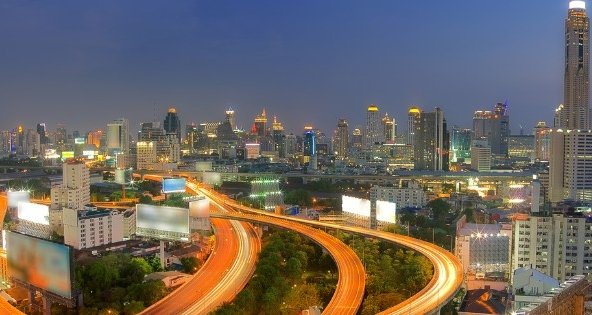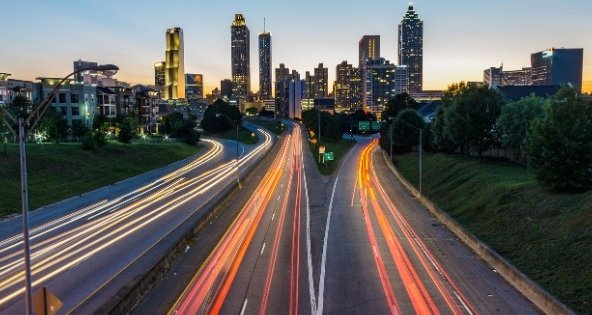Introduction
The Dwarka Expressway, also known as the Northern Peripheral Road (NPR), is a major infrastructural development in the National Capital Region (NCR) of India. Spanning approximately 29 kilometers, this expressway connects Dwarka in Delhi to Gurugram in Haryana. Conceived as an alternative route to decongest the ever-busy NH-8 and Delhi-Gurgaon Expressway, the Dwarka Expressway is a focal point of urban planning and development. This article delves into the basic details of the Dwarka Expressway and explores its numerous advantages.
Details of the Dwarka Expressway
Route and Structure
The Dwarka Expressway starts from Shiv Murti in Delhi and stretches to Kherki Daula Toll Plaza in Gurugram. It passes through various sectors of Dwarka, New Palam Vihar, and several new residential and commercial sectors in Gurugram. The expressway is designed as an eight-lane, access-controlled highway, ensuring smooth and efficient traffic flow. This design is intended to accommodate the high volume of traffic expected on this route, with service roads and dedicated lanes for different types of vehicles to prevent bottlenecks and enhance safety.
Development Phases
The construction of the Dwarka Expressway has been divided into multiple phases. The project faced several delays due to land acquisition issues and legal hurdles, but significant progress has been made in recent years. The expressway is expected to be fully operational soon, with many sections already open to traffic. The phased approach has allowed for a systematic and organized development process, addressing challenges as they arise and ensuring that each segment meets the required standards before moving to the next phase.
Connectivity and Integration
The Dwarka Expressway is designed to integrate seamlessly with other major road networks in the NCR. It connects to the Delhi-Jaipur Expressway (NH-48), providing an alternate route to the Indira Gandhi International Airport. Additionally, the expressway links with the upcoming Delhi-Mumbai Expressway, further enhancing its connectivity. This integration ensures that the Dwarka Expressway is not just a standalone route but a crucial part of a larger network, enhancing the overall transportation infrastructure of the region.
Advantages of the Dwarka Expressway
The Dwarka Expressway offers numerous advantages, ranging from improved connectivity to significant socio-economic benefits. Here are some of the key advantages:
1. Decongestion of Existing Routes
One of the primary advantages of the Dwarka Expressway is the decongestion of existing routes, particularly the NH-8 and the Delhi-Gurgaon Expressway. These routes have long been plagued by heavy traffic, leading to significant delays and inconvenience for commuters. The Dwarka Expressway provides a parallel route, alleviating the traffic burden on these busy highways. This decongestion not only improves travel times but also reduces the wear and tear on existing roads, leading to lower maintenance costs and a more efficient transportation network.
2. Enhanced Connectivity
The expressway significantly enhances connectivity between Delhi and Gurugram. It provides a direct and efficient route for commuters traveling between the two cities, reducing travel time and improving overall accessibility. This enhanced connectivity is expected to boost economic activities and foster greater integration between the two urban centers. Improved connectivity also facilitates easier movement of people and goods, contributing to the overall economic dynamism of the region.
3. Real Estate Development
The development of the Dwarka Expressway has spurred significant real estate growth along its corridor. The availability of improved infrastructure has attracted numerous residential and commercial projects, transforming the area into a real estate hotspot. This development is expected to provide modern housing options, commercial spaces, and employment opportunities, contributing to the overall growth of the region. Real estate developers have recognized the potential of this corridor, leading to the development of state-of-the-art residential complexes, office spaces, and retail centers, creating a vibrant urban ecosystem.
4. Improved Urban Infrastructure
The construction of the Dwarka Expressway has also led to the development of various urban infrastructure projects. These include the creation of new roads, flyovers, underpasses, and service lanes, enhancing the overall urban infrastructure in the region. The improved infrastructure is expected to facilitate better traffic management, reduce congestion, and improve the quality of life for residents. Additionally, the expressway has prompted the development of other amenities such as parks, schools, hospitals, and recreational facilities, contributing to a more holistic urban environment.
5. Boost to Economic Activities
The enhanced connectivity and improved infrastructure provided by the Dwarka Expressway are expected to boost economic activities in the region. The expressway provides better access to commercial centers, industrial hubs, and business districts, facilitating the movement of goods and services. This improved accessibility is likely to attract more businesses and investments, contributing to economic growth and job creation. The expressway’s strategic location makes it an attractive destination for businesses looking to expand or establish their presence in the NCR, driving further economic development.
6. Improved Access to Indira Gandhi International Airport
The Dwarka Expressway provides a more direct and efficient route to the Indira Gandhi International Airport, reducing travel time for passengers. This improved access is particularly beneficial for frequent travelers, businesses, and logistics companies, enhancing the overall connectivity and efficiency of air travel in the region. The expressway’s proximity to the airport also makes it a convenient option for airport-bound traffic, easing the pressure on other routes and providing a smoother travel experience.
7. Environmental Benefits
The decongestion of existing routes and the development of new infrastructure are expected to have positive environmental impacts. Reduced traffic congestion leads to lower vehicular emissions, contributing to improved air quality. Additionally, the construction of the expressway includes provisions for green spaces and landscaping, promoting environmental sustainability. The expressway’s design incorporates eco-friendly practices such as rainwater harvesting, energy-efficient lighting, and the use of recycled materials, minimizing its environmental footprint and supporting sustainable development.
8. Socio-Economic Development
The Dwarka Expressway is expected to drive socio-economic development in the region. The improved connectivity and infrastructure will provide better access to education, healthcare, and other essential services. This enhanced accessibility is likely to improve the overall quality of life for residents, fostering socio-economic development and inclusivity. The expressway’s development has also created numerous job opportunities, both during the construction phase and through the subsequent establishment of businesses and services along its corridor.
9. Increased Investment Opportunities
The strategic importance of the Dwarka Expressway has made it a magnet for investments. Both domestic and international investors are eyeing the region for its potential for high returns. The expressway’s development has led to increased demand for commercial real estate, making it an attractive option for businesses looking to establish or expand their operations. This influx of investment is expected to stimulate further economic growth and development in the area.
10. Development of Smart City Features
The Dwarka Expressway is at the forefront of adopting smart city features. The infrastructure along the expressway includes smart lighting, intelligent traffic management systems, and surveillance systems to ensure safety and efficiency. These smart city features not only enhance the quality of life for residents but also set a benchmark for future urban development projects in India. The use of technology in managing and operating the expressway ensures optimal performance and sustainability.
11. Promotion of Sustainable Transportation
The Dwarka Expressway also promotes sustainable transportation options. Dedicated lanes for buses, cycling tracks, and pedestrian pathways are being developed to encourage the use of public transport and non-motorized modes of travel. This approach not only reduces traffic congestion but also contributes to reducing the carbon footprint, aligning with global sustainability goals. The emphasis on sustainable transportation is expected to influence the commuting habits of residents, promoting a healthier and more eco-friendly lifestyle.
12. Increased Property Values
The development of the Dwarka Expressway has led to a significant increase in property values in the surrounding areas. The improved infrastructure and connectivity have made the region highly desirable for both residential and commercial purposes. Property investors have seen substantial returns on their investments, and the trend is expected to continue as the expressway becomes fully operational. The appreciation in property values is a testament to the transformative impact of the expressway on the real estate market.
13. Enhanced Safety Features
Safety has been a key consideration in the design and construction of the Dwarka Expressway. The expressway includes features such as proper signage, barriers, and surveillance systems to ensure the safety of commuters. Emergency response systems and facilities have also been incorporated to address any incidents promptly. The emphasis on safety not only protects commuters but also enhances the overall reliability and efficiency of the expressway.
14. Boost to Tourism
The improved connectivity provided by the Dwarka Expressway is expected to boost tourism in the NCR. The expressway provides easier access to various tourist attractions in Delhi and Gurugram, making it more convenient for tourists to explore the region. The development of hotels, restaurants, and entertainment centers along the expressway corridor further enhances its appeal as a tourist destination. The boost to tourism is likely to contribute to the local economy and create additional employment opportunities.
15. Resilience to Urban Challenges
The Dwarka Expressway has been designed to be resilient to urban challenges such as traffic congestion, pollution, and infrastructural strain. The expressway’s modern design and construction techniques ensure that it can handle high volumes of traffic efficiently. Additionally, the incorporation of green spaces and sustainable practices mitigates the environmental impact, making it a model for future urban infrastructure projects. The resilience of the expressway ensures its long-term viability and effectiveness in addressing the region’s transportation needs.
Conclusion
The Dwarka Expressway is a transformative infrastructure project that offers numerous advantages. From decongesting existing routes to enhancing connectivity, promoting real estate development, and driving economic growth, the expressway is poised to have a significant impact on the National Capital Region. As the project nears completion, it promises to usher in a new era of urban connectivity and development, benefiting residents, businesses, and the overall economy. The Dwarka Expressway stands as a testament to the power of strategic infrastructure planning and its potential to transform urban landscapes.
The expressway is not merely a road but a catalyst for holistic development, poised to redefine the socio-economic landscape of the NCR. Its successful completion will mark a significant milestone in India’s infrastructural journey, demonstrating the profound impact of well-planned and executed infrastructure projects on urban growth and development. As the region continues to evolve, the Dwarka Expressway will undoubtedly remain a cornerstone of its progress, facilitating a brighter and more connected future for all its inhabitants. The expressway’s multifaceted benefits underscore the importance of visionary infrastructure projects in shaping the future of urban centers, providing a blueprint for sustainable and inclusive growth.



